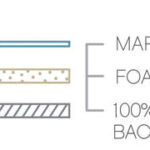Japan, the Land of the Rising Sun, is a dream destination for many. From bustling metropolitan cities to serene temples and breathtaking natural landscapes, Japan offers a unique and unforgettable travel experience. Planning your first trip to Japan can feel overwhelming, but with the right preparation, it can be an incredibly smooth and rewarding adventure. This comprehensive guide will provide you with an essential Japan Travel Itinerary and insider tips to make your journey seamless and truly immersive.
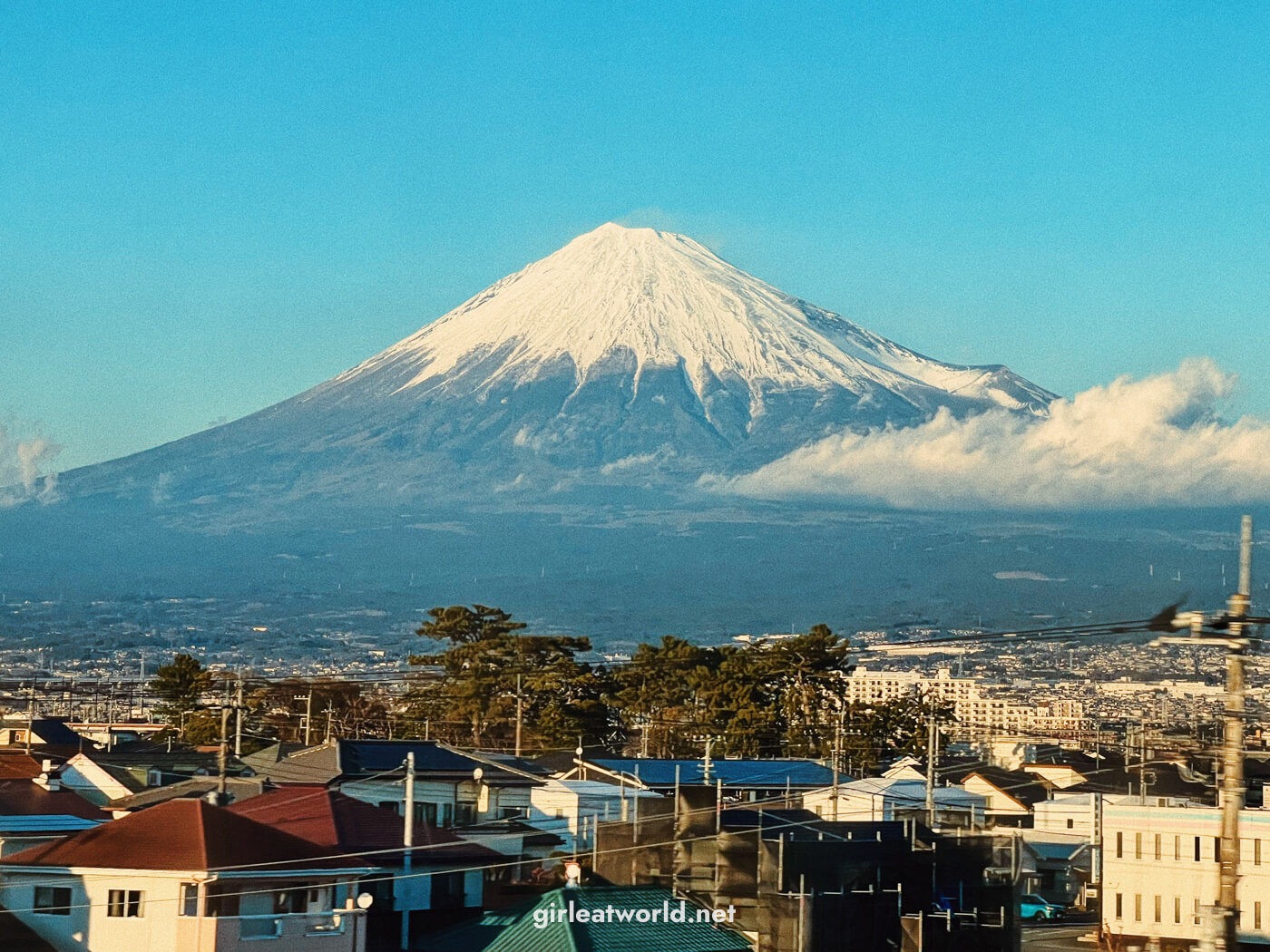 Mount Fuji from Shinkansen ride from Tokyo to Osaka
Mount Fuji from Shinkansen ride from Tokyo to Osaka
Essential Japan Travel Tips for First-Time Visitors
Japan is known for its efficiency and politeness, making it a relatively easy country to navigate. However, a few key tips can significantly enhance your travel experience and ensure a smoother journey.
Language and Communication: Bridging the Gap with Google Translate
While English is spoken in major tourist centers, knowing some basic Japanese phrases or utilizing technology can be incredibly helpful. Downloading Japanese Google Translate for offline use is a game-changer. This powerful tool allows you to translate menus, signs, and conversations instantly by simply pointing your camera or typing.
Connectivity: Stay Connected with a Data e-SIM
Staying connected is crucial for navigation, translation, and staying in touch. While SIM cards were once the go-to, e-SIMs offer unparalleled convenience. With an e-SIM, you can activate a Japanese data plan digitally without removing your physical SIM card, ensuring you remain connected without any hassle.
Buy a Data e-SIM for Japan: Secure your Japan data e-SIM conveniently through Klook.
Booking in Advance: Secure Your Spot at Popular Attractions
Japan’s popularity as a travel destination means advance planning is essential, especially for popular attractions. In cities like Tokyo, tickets for sought-after experiences can sell out weeks or even months ahead. For must-visit spots like Shibuya Sky and teamLab Borderless and Planets, booking at least a month in advance is highly recommended to secure your preferred time slots. Train tickets, especially during peak seasons like Sakura (cherry blossom) and Momiji (autumn leaves), may also require advance purchase.
Luggage Handling: Travel Light and Smart
Moving between cities in Japan is common, and you don’t need to be burdened by heavy luggage. Japan offers excellent luggage solutions. You can utilize Takuhaibin (luggage forwarding services) to send your bags directly to your next destination or make use of coin lockers at train stations for temporary storage. We’ll delve deeper into luggage handling options later in this guide.
Open-Jaw Flights: Optimize Your Travel Route
For itineraries following the classic “Golden Route” (Tokyo to Kyoto/Osaka), consider an open-jaw flight ticket. Flying into Tokyo (HND or NRT) and departing from Osaka (KIX), or vice versa, saves you valuable travel time and eliminates the need to return to your starting city, making your itinerary more efficient.
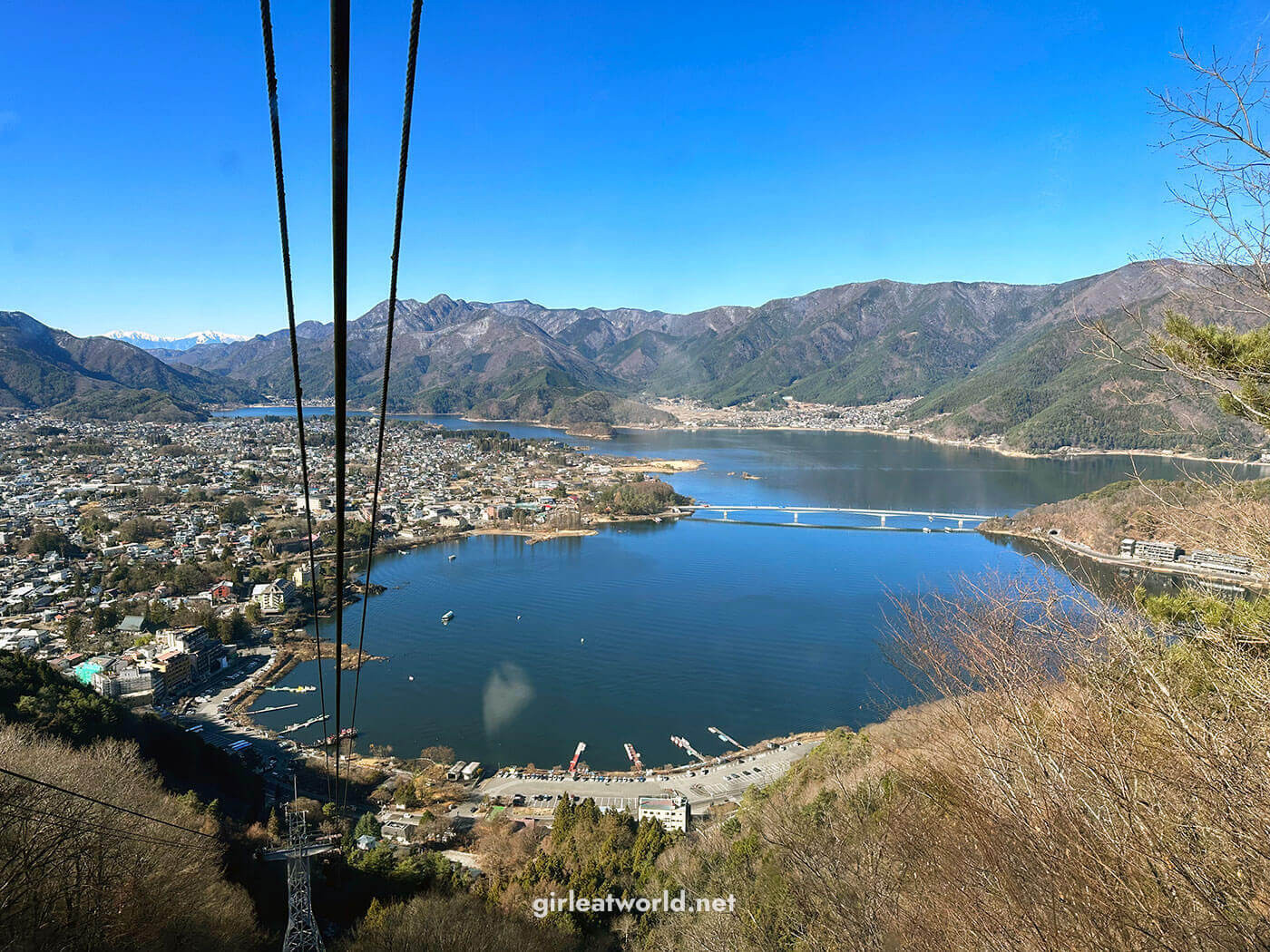 Lake Kawaguchi from Kawaguchiko Ropeway
Lake Kawaguchi from Kawaguchiko Ropeway
Cash vs. Card: Yen and ATMs in Japan
While Japan is increasingly embracing digital payments, it remains a largely cash-based society, especially outside major cities and in smaller establishments. It’s wise to carry some Yen, particularly if you plan to explore local eateries or venture into more rural areas. Budget around 5,000 Yen per person per day for daily necessities, and more if your accommodation isn’t prepaid or you plan on extensive shopping. Convenience stores (Konbini) like 7-ELEVEN are lifesavers, offering reliable ATMs for foreign card withdrawals. When withdrawing cash, always choose to be charged in Yen to get the best exchange rate from your bank.
Wise Debit Card: For minimizing ATM withdrawal fees, consider using a Wise card. Learn more about using Wise for travel here.
Comfortable Shoes: Prepare for Lots of Walking
Walking and public transport are the primary modes of getting around in Japanese cities. Be prepared to do a lot of walking! Comfortable, supportive walking shoes are essential for exploring efficiently and keeping your feet happy throughout your journey.
Offline Maps: Navigate with Ease
Download city maps on Google Maps for offline use. This reduces mobile data consumption and ensures you can navigate even in areas with limited connectivity. Download maps for each city you plan to visit for seamless exploration. Learn how to download offline maps here.
Fast-Track Arrival: Visit Japan Web for Smooth Immigration
Streamline your arrival process by using Visit Japan Web. This digital service allows you to complete immigration and customs procedures online before you even arrive in Japan, saving you time and hassle at the airport. Read our step-by-step guide to Visit Japan Web here!
Mastering Tax-Free Shopping in Japan
One of the perks of traveling to Japan is tax-free shopping. Tourists can enjoy a 10% consumption tax exemption on purchases over 5,000 yen at participating stores. Look for the tax-free symbol displayed at stores to identify eligible shops. Remember to bring your passport as proof of tourist status. While a QR code from Visit Japan Web exists for tax-free shopping, carrying your physical passport is still recommended as the system is relatively new, and not all stores may fully support the digital QR code yet.
Tax-free items are categorized as Consumables (food, cosmetics, drinks) and General goods (clothing, electronics, accessories). Consumables are sealed in special bags and are not to be opened until you leave Japan. Major retailers like Uniqlo, Muji, Matsumoto Kiyoshi, and Donki often offer tax-free shopping, but availability can vary by branch, so check in advance.
It’s crucial to understand that tax-free shopping is not a tax refund. The discount is applied directly at the point of purchase, meaning you pay 10% less immediately, unlike tax refund systems in other countries. While convenient, Japan is considering transitioning to a tax refund model in 2026 to address potential system abuse.
Handling Luggage Like a Pro: Your Guide to Luggage Solutions in Japan
Traveling through multiple cities is a common part of a Japan travel itinerary. Efficient luggage management is key to a stress-free trip. Here are several options for handling your luggage while traveling in Japan:
1. Takuhaibin: Send Your Luggage Ahead
Takuhaibin, or luggage forwarding service, is a widely used and incredibly efficient service in Japan. It allows you to send your luggage ahead to your next hotel, airport, or even other destinations within Japan. This service is especially popular among locals for domestic travel via Shinkansen, enabling hands-free and comfortable travel. Takuhaibin counters are conveniently located at hotels, convenience stores, and train stations throughout Japan.
2. Coin Lockers at Train Stations: Convenient Short-Term Storage
Major train stations in Japan are equipped with coin lockers of various sizes, providing a convenient solution for short-term luggage storage. If you have an early check-out but a later departure, or if you arrive before hotel check-in time, coin lockers are ideal. Sizes range from small (300 yen) suitable for backpacks to large (700 yen) accommodating larger suitcases. Remember to take a photo of your locker location as stations can be large and busy. Lockers are typically for one-day use, though some locations, like Tokyo Station, offer longer durations. Be aware that lockers in popular stations can fill up quickly, especially during peak hours.
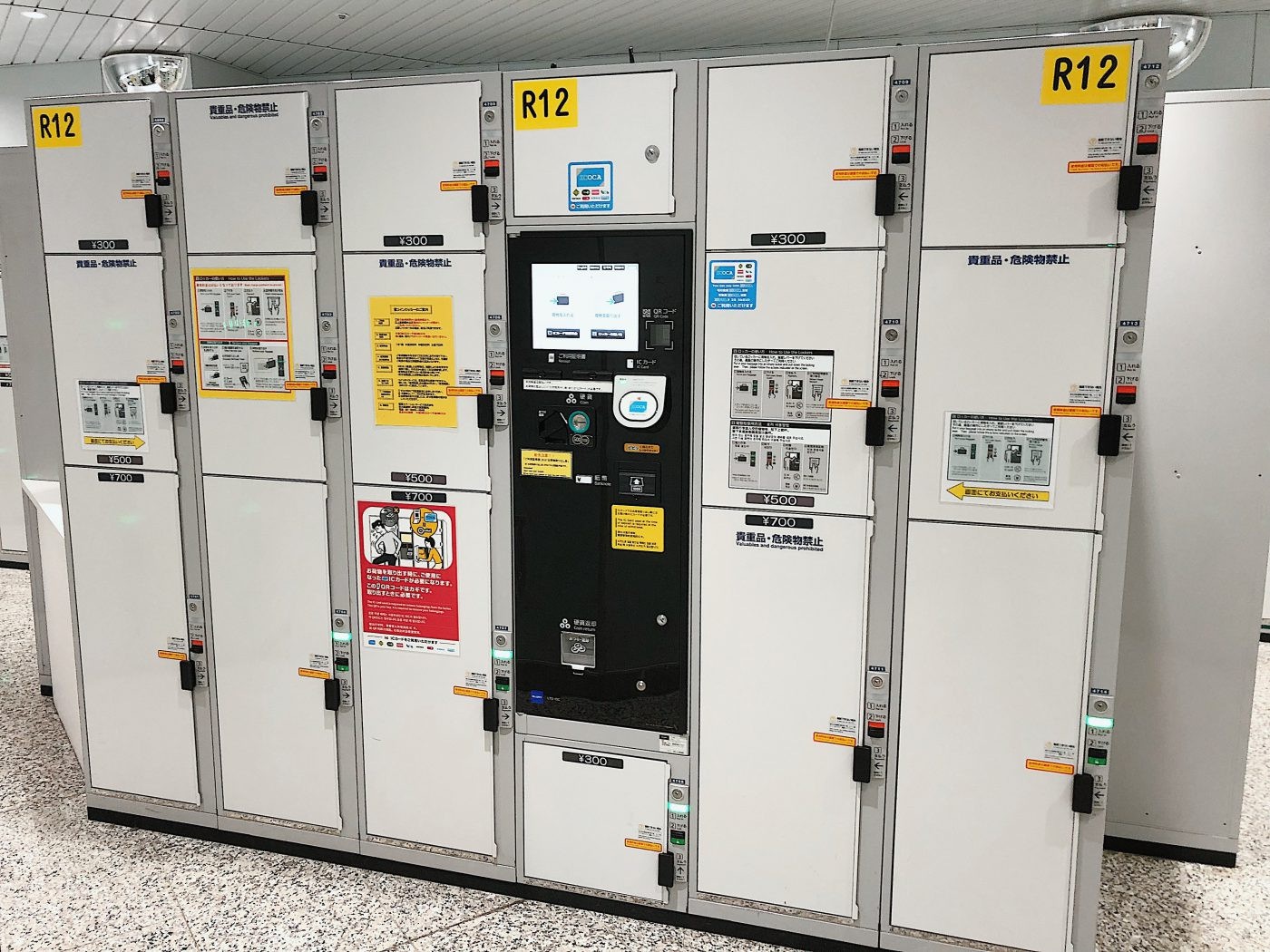 Coin lockers at JR station
Coin lockers at JR station
3. Tourist Information Centers: Luggage Storage and Travel Assistance
Tourist Information Centers, often located at major train stations and airports, provide not only travel advice but also luggage storage services. While not free, the fees are usually comparable to coin lockers and offer the added benefit of assistance and travel information.
4. Hotel Luggage Storage: Utilize Hotel Services
Japanese hotels are generally very accommodating and offer luggage storage services. You can leave your luggage at your hotel before check-in or after check-out, allowing you to explore freely without your bags. Simply inquire at the front desk for assistance.
Japanese Etiquette and Customs: Do’s and Don’ts for Travelers
Japanese culture is rich in social customs and etiquette. While visitors are not expected to be experts, understanding a few key points will demonstrate respect and enhance interactions with locals.
1. Be Considerate and Aware of Your Surroundings: Respect Public Space
Consideration for others is a cornerstone of Japanese culture. Avoid loud conversations, phone calls, or any behavior that might disturb others, especially on public transport. Use headphones to listen to music and ensure your phone is on silent mode.
2. Take off Shoes Indoors: A Sign of Respect and Cleanliness
Removing outdoor shoes when entering homes is a common practice across Asia and is also observed in many traditional Japanese establishments, including some restaurants and ryokans (traditional inns). Look for shoe racks or designated areas at entrances and switch to provided slippers or go barefoot indoors.
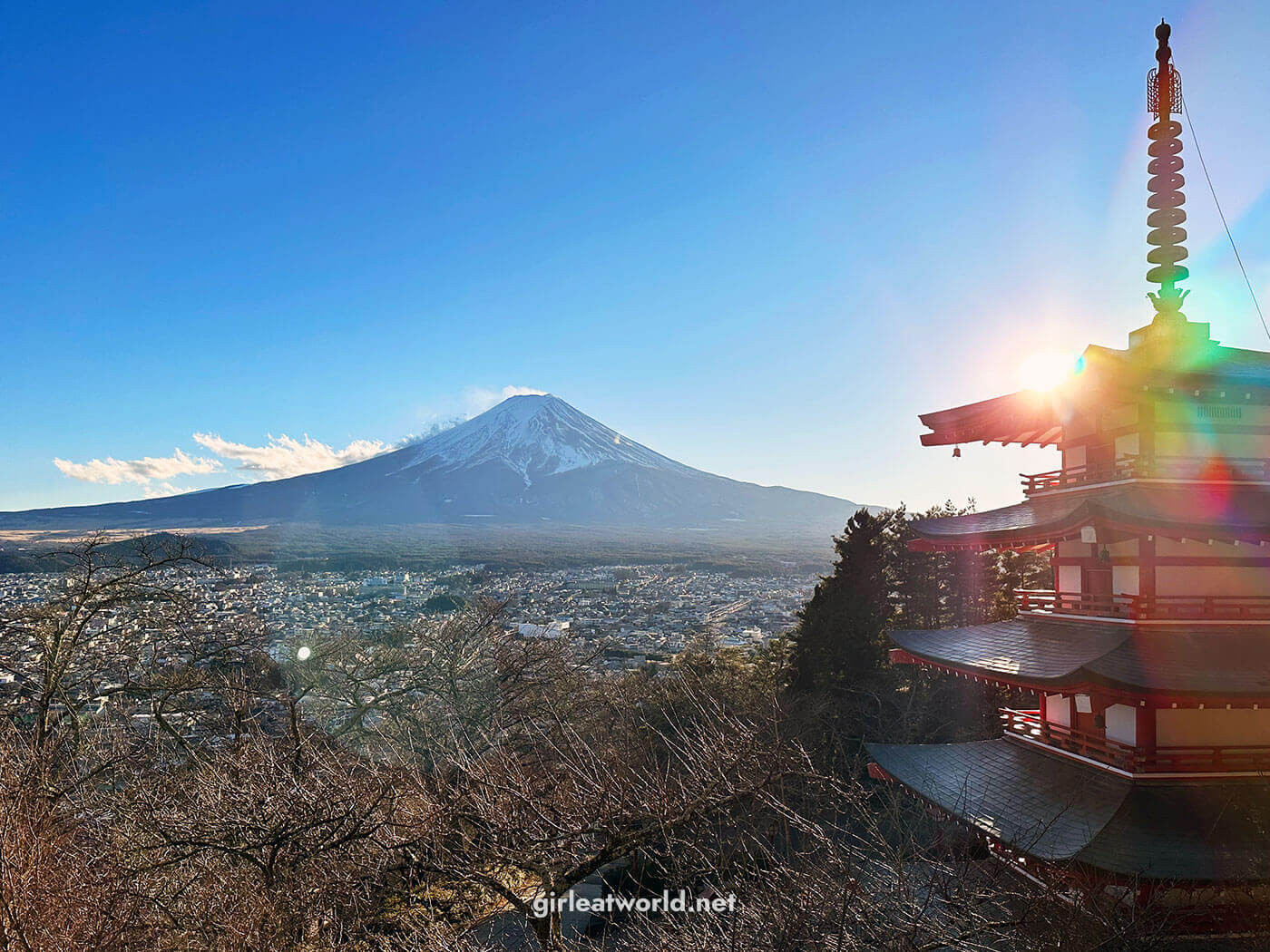 View of Mount Fuji from Arakuyama Sengen Park
View of Mount Fuji from Arakuyama Sengen Park
3. Tipping is Not Practiced: Excellent Service is Standard
Despite the exceptional service in Japan, tipping is not customary or expected. In fact, attempting to tip may cause confusion or even be perceived as rude. Excellent service is considered standard and is already included in the price.
4. Carry Your Trash With You: Responsible Waste Disposal
Public trash bins are scarce in Japan due to complex waste sorting rules and security concerns. Carry your trash with you until you can dispose of it properly at your hotel or designated bins. Littering is highly frowned upon.
5. Don’t Eat While Walking: A Matter of Politeness
Eating while walking (Tabearuki) is generally considered impolite in Japan. It’s associated with creating litter and being inconsiderate of public spaces. While acceptable at festivals and food stalls, it’s best to avoid eating while walking in general public areas.
6. Don’t Be Surprised by Otoshi (Compulsory Appetizer): Table Charge in Izakayas
In some restaurants and especially Izakayas (Japanese pubs), you may be served a small appetizer (Otoshi) upon being seated without ordering it. This is a compulsory table charge and cannot be refused. Otoshi typically costs around 400-500 yen and serves as a cover charge, ensuring the establishment’s profitability.
7. Be Completely Naked in an Onsen: Hygiene and Tradition
If you plan to visit an Onsen (hot spring), be prepared to be completely naked. Swimsuits and underwear are not permitted and are considered unhygienic and against Onsen etiquette.
♨️ Onsen Guide: For a detailed understanding of Onsen customs, read our comprehensive Onsen etiquette guide before your visit.
Useful Japanese Phrases for Your Trip
While Google Translate is invaluable, knowing a few basic Japanese phrases will enhance your interactions and be appreciated by locals.
| Phrase | Japanese | Pronunciation |
|---|---|---|
| Yes | Hai | Hai |
| No | i-ie | ee-eh |
| Excuse me | Sumimasen | Su-mi-ma-sen |
| Thank you | Arigato gozaimasu | A-ri-ga-to go-zai-mas |
| Good Morning | Ohayou | O-ha-yo |
| Good afternoon/Hello | Konnichiwa | Kon-ni-chi-wa |
| Please | Onegaishimasu | O-ne-gai-shi-masu |
| Can I have the bill, please? | Okaikei onegaishimasu | O-kai-kei o-ne-gai-shi-masu |
| How much is this? | Kore wa ikura desu ka? | Ko-re wa i-ku-ra desu ka? |
| Where is the toilet? | Toire wa doko desu ka? | To-i-re wa do-ko desu ka? |
| Let’s eat | Itadakimasu | I-ta-da-ki-masu |
| Thank you for the meal | Gochisosamadeshita | Go-chi-so-sa-ma-de-shi-ta |
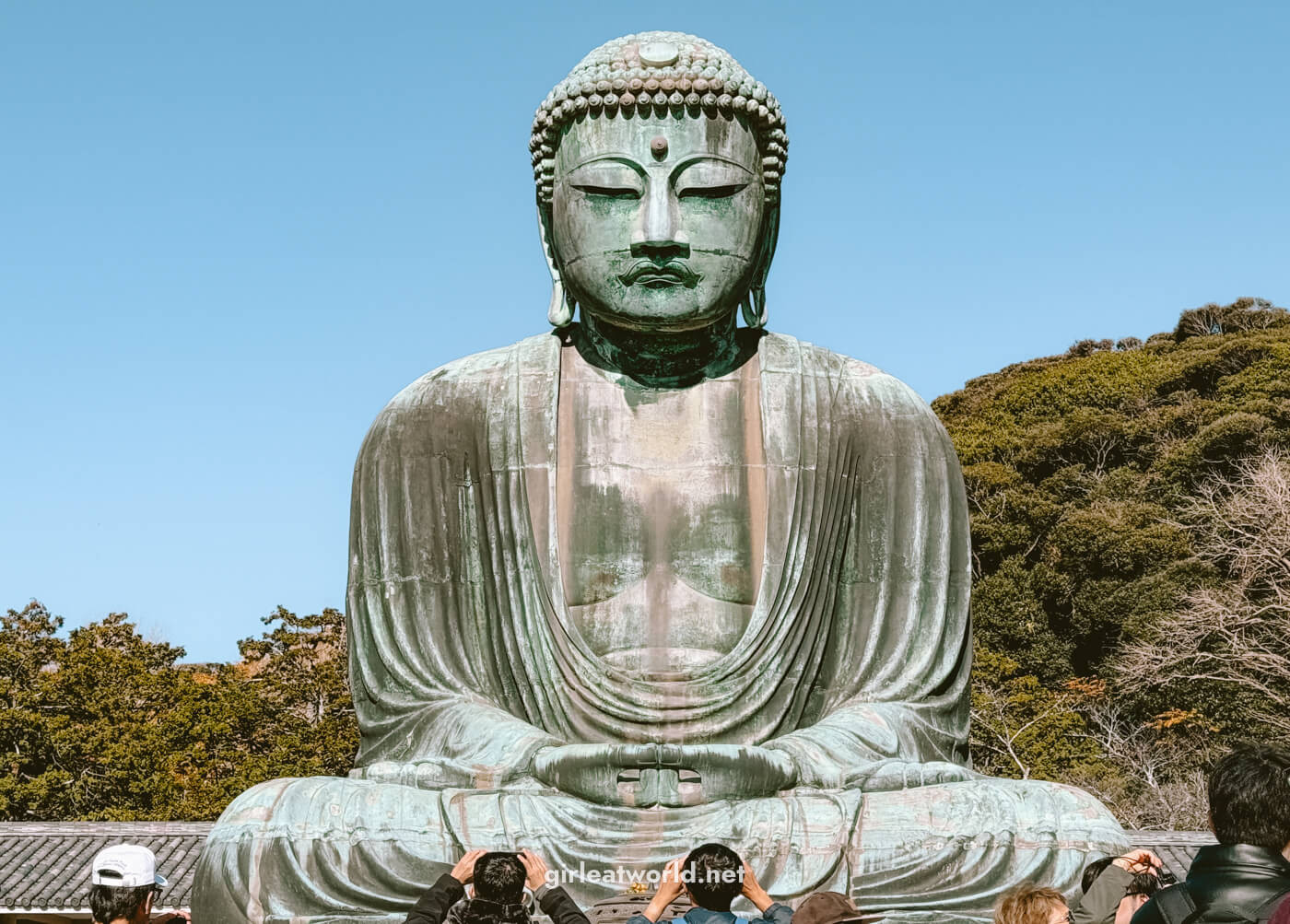 Daibutsu at Kotoku-in in Kamakura
Daibutsu at Kotoku-in in Kamakura
Smooth Entry to Japan: Visa and Immigration
Ensuring a smooth entry into Japan involves understanding visa requirements and utilizing online services to expedite procedures.
1. Japan eVisa: Applying for Your Visa Online (If Required)
Japan has visa exemption agreements with over 70 countries. Check this list to see if your nationality is eligible for visa-free entry. If not, you will need to apply for a Japan visa. For residents of certain countries, the Japan electronic visa (eVisa) offers a convenient online application process. Read our guide on how to apply for a Japan visa online.
2. Visit Japan Web: Streamline Immigration and Customs
Utilize Visit Japan Web to complete immigration and customs declarations online before your arrival. While not mandatory, it significantly speeds up airport procedures. This free service is highly recommended for a smoother arrival experience. Our comprehensive guide to Visit Japan Web is available here.
Thousands of Maneki Neko (beckoning cat) figurines at Gotokuji Temple in Tokyo, a charming and unique cultural site.
How Long Should Your Japan Travel Itinerary Be?
The ideal duration for your Japan travel itinerary depends on your interests and how much you want to experience.
5-Day Japan Itinerary: A Taste of Tokyo and Surroundings
For first-timers with limited time, 5 days can provide a fantastic introduction to Japan, focusing on Tokyo and a short trip to nearby scenic areas like Mount Fuji or Hakone. This allows you to experience the vibrant city life and natural beauty in a shorter timeframe.
10-Day Japan Itinerary: The Golden Route and Essential Experiences
A 10-day Japan travel itinerary is highly recommended to experience the essential highlights of Japan. This duration allows you to explore Tokyo and venture to other major cities like Osaka, Kyoto, and Nara, following the popular “Golden Route.” This itinerary balances urban exploration with cultural immersion and natural landscapes, offering a well-rounded first-time experience.
Elegantly dressed ladies in Kimono strolling in Kyoto, capturing the traditional charm of Japan’s cultural heart.
On my first trip, a 5-day Tokyo-focused itinerary with a day trip to Hakone ignited my love for Japan and led to many return visits. Even a shorter trip can be enough to fall in love with this captivating country.
Getting Around Japan: Transportation Guide
Japan boasts an incredibly efficient and extensive transportation network, making travel within the country remarkably easy.
Airport Transfers: Starting Your Journey Smoothly
Upon arrival, you have several options for airport transfers:
- Airport Express Trains: Cities like Tokyo and Osaka offer direct Airport Express train lines connecting the airport to city centers. These are efficient and cost-effective.
- Private Airport Transfers: For larger groups or those with heavy luggage, private airport transfers offer convenience and comfort, especially when pre-booked through services like Klook.
Book train ticket online: Purchase Japan train tickets easily via Klook for convenient redemption upon arrival.
Shinkansen (Bullet Train): Fast and Efficient Intercity Travel
The Shinkansen (bullet train) is the iconic high-speed rail system in Japan, connecting major cities with remarkable speed and efficiency. It’s the most popular way to travel between cities like Tokyo, Kyoto, and Osaka. Consider purchasing a JR Pass if you plan on extensive Shinkansen travel to minimize costs. Learn more about JR Pass and Shinkansen travel here.
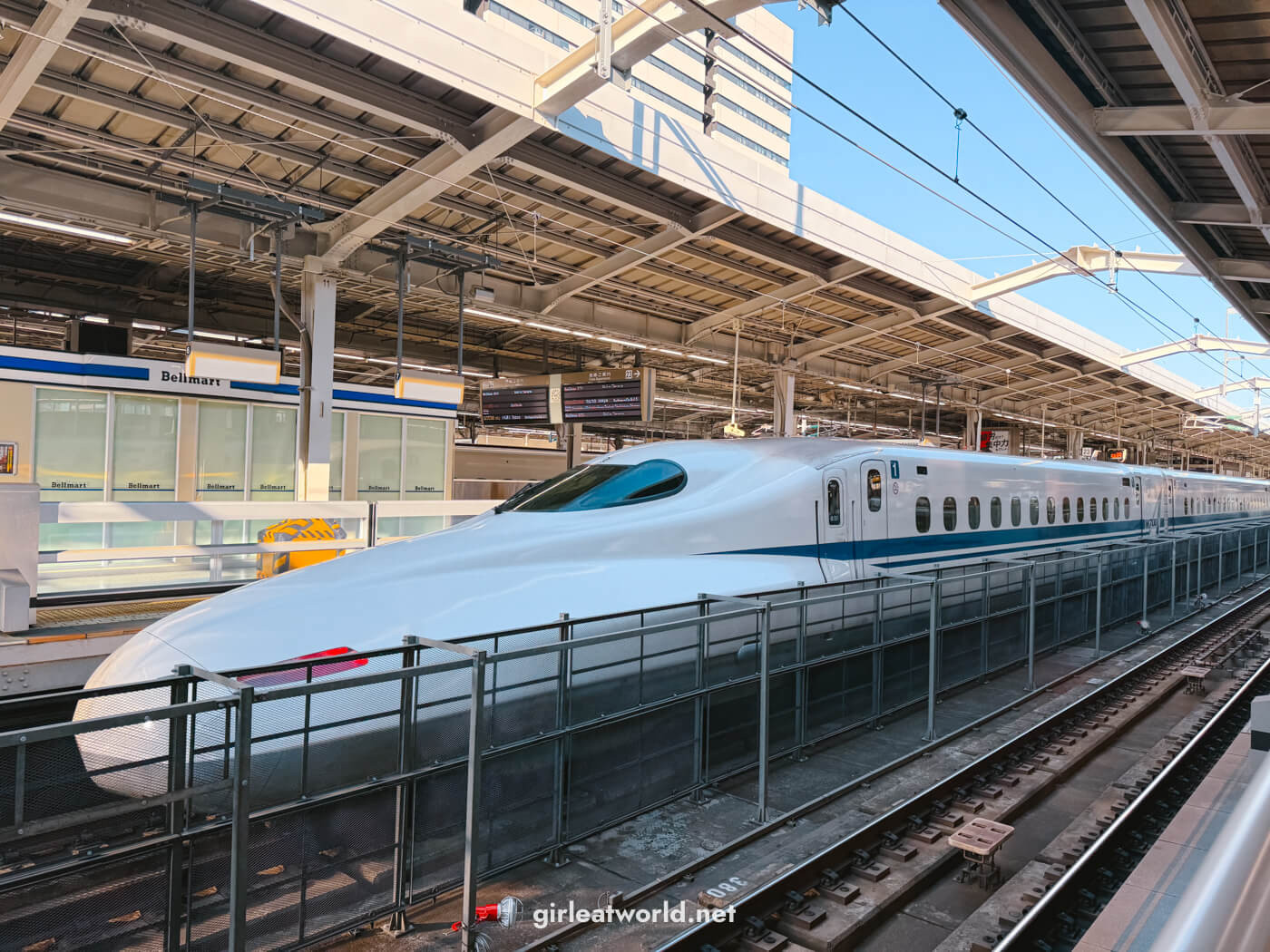 Shinkansen Bullet Train
Shinkansen Bullet Train
Car Rental and Driving: Explore Rural Japan at Your Own Pace
Renting a car in Japan is a great option for exploring regions less accessible by train, particularly rural and mountainous areas. An international driver’s license is required. Car rentals can be conveniently booked through services like Klook, with airport and city pick-up options available. Book your car rental through Klook here.
Domestic Flights: Saving Time on Long Distances
Domestic flights are a time-saving option for traveling long distances within Japan, often comparable in cost to Shinkansen for longer routes. Domestic flights are quick and efficient, without the need for immigration procedures.
Local Public Transport (IC Cards): Seamless City Navigation
Within cities, local trains and subways are the most efficient modes of transport. IC cards like SUICA, PASMO (Tokyo), and ICOCA (Osaka) provide seamless payment for trains and buses across different cities. These rechargeable cards eliminate the need for individual tickets and can even be used for purchases at convenience stores and vending machines.
Virtual IC Card: Using Your iPhone as an IC Card
iPhone users can utilize virtual IC cards, adding even greater convenience. You can set up and recharge a virtual IC card directly on your iPhone, eliminating the need for a physical card. Learn how to use a virtual IC card on your iPhone here.
Taxis: Convenient but Costly Option
Taxis in Japan offer excellent service, with automatic doors and courteous drivers. However, they are a more expensive option, especially in major cities, and are best used when trains are not operating or for short distances, or when traveling with children or elderly individuals. Taxi stands are readily available outside train stations, and taxi apps like GO Taxi are also available.
Best Time to Visit Japan: Seasons and Considerations
Japan is a year-round destination, but the best time to visit depends on your preferences and what you want to experience.
1. Winter (December to February): Clear Skies and Winter Sports
Winter in Japan is cold but often sunny, offering excellent visibility of Mount Fuji. It’s also the peak season for skiing and snowboarding, with world-renowned powder snow (“Ja-pow”). Plum blossoms, often mistaken for cherry blossoms, begin to bloom in February, adding early spring color.
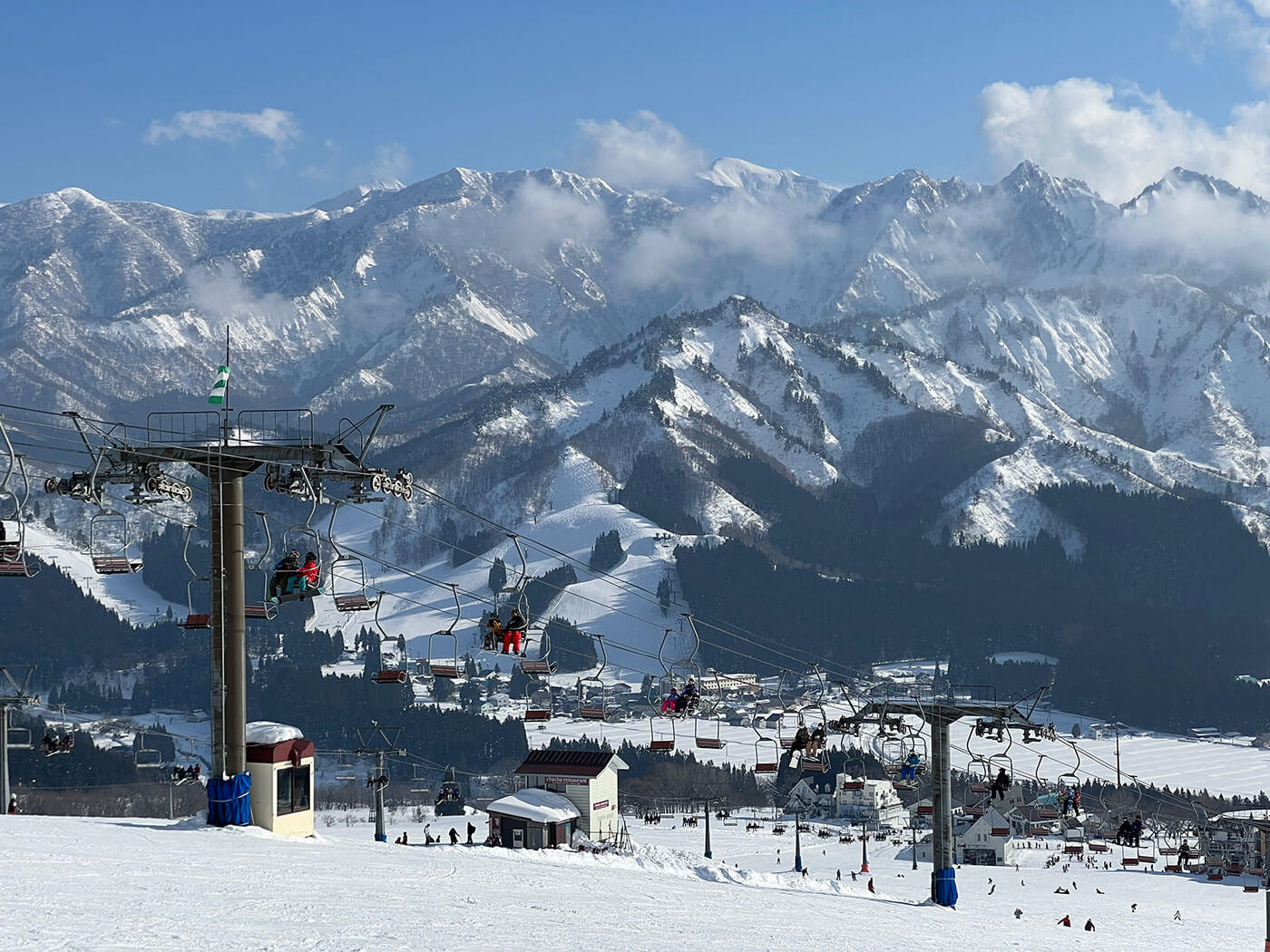 Iwappara Ski Resort near Tokyo
Iwappara Ski Resort near Tokyo
2. Spring (March to May): Cherry Blossom Season
Spring, particularly cherry blossom season (Sakura) from mid-March to early April, is the most popular time to visit Japan. The weather is mild and beautiful, but expect crowds and higher prices. Golden Week, a major holiday period in early May, also increases domestic travel.
3. Summer (June to September): Festivals and Lush Landscapes
Summer in Japan is hot and humid, with rain and occasional typhoons. However, it’s also festival season (Matsuri) and offers lush green landscapes. Obon, a significant holiday in August, sees increased domestic tourism.
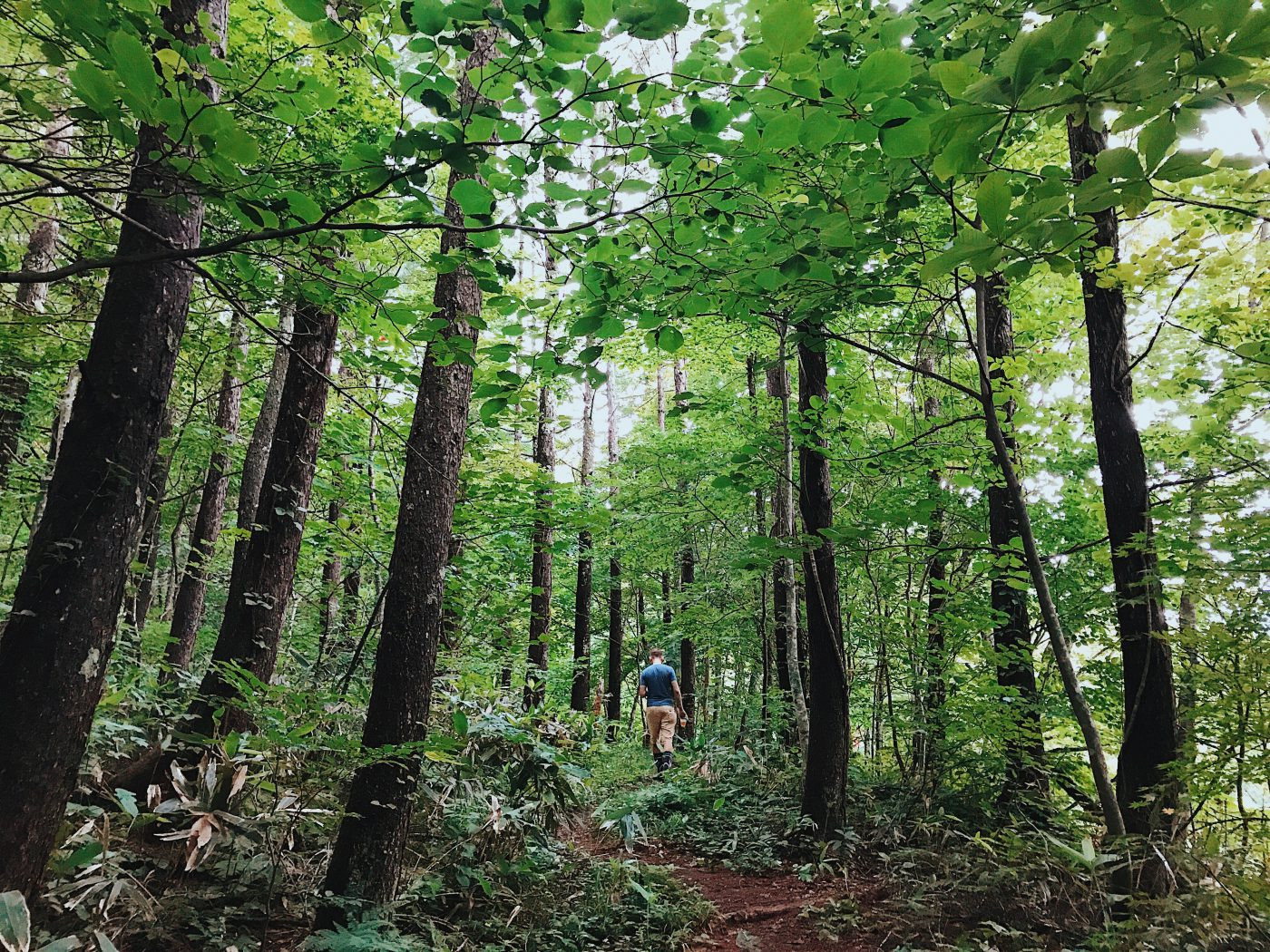 Green summer forest in Japan during the summer
Green summer forest in Japan during the summer
4. Autumn (October to Early December): Spectacular Fall Foliage
Autumn, especially Momiji (autumn leaves) season from mid-November to early December, is the second most popular time to visit. The weather is pleasant, and the fall foliage is breathtaking. Typhoon season can extend into October, so be aware of potential weather disruptions.
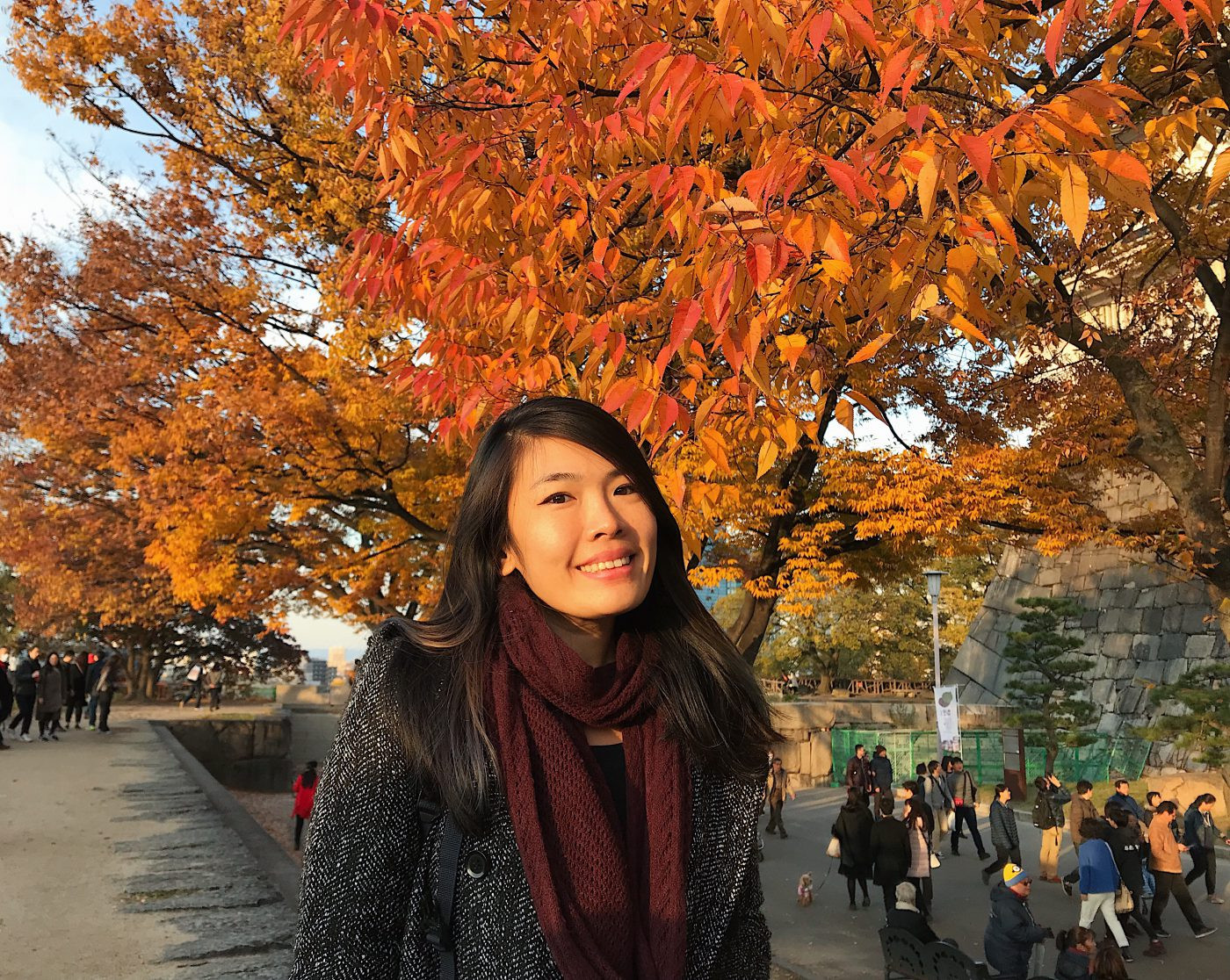 Osaka Castle
Osaka Castle
Japan Travel Costs: Budgeting Your Trip
The cost of a trip to Japan varies greatly depending on your travel style and itinerary. Here are some ballpark estimates:
- Simple meals (convenience store): 300-1,000 yen per meal
- Restaurant meals: 1,500-2,500 yen per meal (regular restaurants)
- Accommodation (decent hotel, 2 people): ~20,000 yen per night
- Local transport: 800-1,000 yen per day (train)
The Ultimate 10-Day Japan Travel Itinerary: The Golden Route
The Golden Route is a classic and highly recommended Japan travel itinerary for first-time visitors, showcasing the best of Japan’s cities, culture, and nature.
Day 1 to 3: Tokyo – Modern Metropolis and Cultural Hub
Tokyo, Japan’s capital and the world’s largest metropolis, is the perfect starting point for your Japan adventure.
🗼 Tokyo Travel Guide: Explore our extensive Tokyo Travel Guide for detailed itineraries and activities.
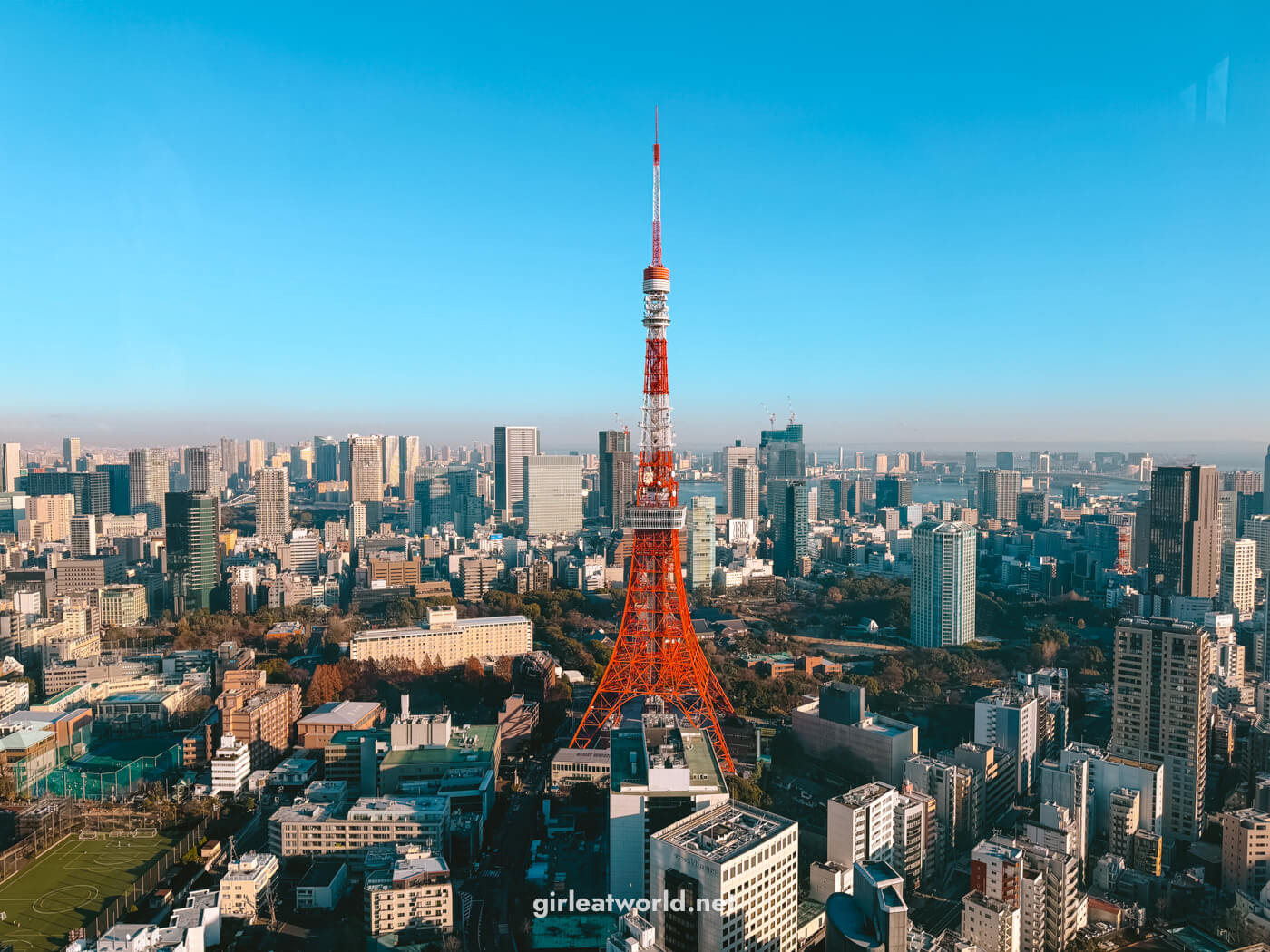 Tokyo Tower from Skylobby at Azabudai Hill
Tokyo Tower from Skylobby at Azabudai Hill
Day 1: Yoyogi Park, Harajuku, Omotesando, and Roppongi
- Morning: Explore Yoyogi Park and Meiji Jingu Shrine.
- Afternoon: Wander through trendy Harajuku and upscale Omotesando.
- Evening: Head to Roppongi Hills for dinner and city views.
➡️ Tip: See our Day 1 Tokyo Itinerary for more details and dining suggestions.
Day 2: Shibuya and Shinjuku – Iconic Cityscapes and Shopping
- Morning: Experience the iconic Shibuya Scramble Crossing and Hachiko statue.
- Afternoon: Visit Shibuya Sky for panoramic city views and explore Shibuya’s shopping streets.
- Evening: Explore Shinjuku Gyoen National Garden and Omoide Yokocho for dinner.
➡️ Tip: Refer to Day 2 and Day 4 Itinerary in our Tokyo guide for detailed itineraries and dining options.
Day 3: Akihabara, Ueno Park, and Asakusa – Culture and Pop Culture
- Morning: Immerse yourself in Akihabara Electric Town’s pop culture and electronics.
- Afternoon: Relax in Ueno Park, visit museums, and explore Senso-ji Temple in Asakusa.
- Evening: Consider visiting Tokyo Skytree for evening city views.
➡️ Tip: Check our Day 3 Itinerary for a detailed plan.
Day 4 to 5: Hakone or Lake Kawaguchi – Mountain Scenery and Mount Fuji Views
Escape the city bustle with a trip to the mountainous region near Tokyo for nature, fresh air, and a chance to see Mount Fuji. Choose between Hakone and Lake Kawaguchi for a 1.5-day trip. Hakone is generally easier to navigate without a car.
Option 1: Hakone – Art, Nature, and Volcanic Hot Springs
Hakone, a mountain resort town, offers stunning views of Mount Fuji (weather permitting), art museums, nature trails, and onsen experiences. Follow the Hakone Loop for an efficient sightseeing route.
➡️ Hakone Travel Guide: Our Hakone travel guide provides everything you need to plan your trip.
Clockwise from top left: Heiwa no Torii at Hakone Shrine, Hakone Gora Park, and lava eggs at Owakudani volcanic valley.
Option 2: Fuji Five Lakes – Direct Views of Mount Fuji
Fuji Five Lakes offers the closest views of Mount Fuji and a tranquil mountain retreat. Enjoy hiking, onsen, and lakeside walks. Be aware that Mount Fuji visibility can be unpredictable due to clouds.
🗻 Fuji Five Lakes Itinerary: Plan your trip with our detailed Fuji Five Lakes itinerary.
Left: Mount Fuji view from Arakuyama Sengen Park, Right: Chu-ike pond at Oshino Hakkai village.
Day 6 to 7: Kyoto – Ancient Capital and Cultural Heart
Kyoto, Japan’s former imperial capital, is a must-visit for its stunning temples, traditional gardens, and geisha districts.
⛩️ Kyoto Travel Guide: Explore our comprehensive Kyoto Travel Guide.
Clockwise from top left: Yasaka Pagoda, Fushimi Inari Taisha’s Senbon Torii gates, and Sakura Mochi in Arashiyama.
Day 6: Kyoto’s Essential Temples and Districts
- Morning: Visit Fushimi Inari Taisha Shrine with its thousands of red torii gates.
- Afternoon: Explore Kiyomizu-dera Temple and stroll through Higashiyama district, including Ninenzaka and Sannenzaka streets.
- Late Afternoon: Walk the Philosopher’s Path to Ginkaku-ji (Silver Pavilion).
Day 7: Arashiyama – Bamboo Forest and Scenic Beauty
- Full Day: Explore Arashiyama Bamboo Grove, Tenryu-ji Temple, and Iwatayama Monkey Park. Consider the Sagano Scenic Railway.
➡️ Tip: See our Kyoto Itinerary for more details.
Day 8: Nara – Deer Park and Ancient Temples
Nara, Japan’s first permanent capital, is a charming day trip from Osaka, famous for its friendly wild deer and historic temples.
🦌 Nara Travel Guide: Plan your day trip with our Nara Travel Guide.
Left: Sika deer in Nara Park with a red torii gate, Right: Nigatsu-do Hall at Todai-ji Temple.
- Morning: Visit Todai-ji Temple and see the Great Buddha. Explore Nigatsu-do and Sangatsu-do Halls.
- Afternoon: Interact with deer in Nara Park and visit Kasuga Taisha Shrine.
➡️ Tip: Follow our Nara day trip itinerary for a detailed plan.
Day 9 to 10: Osaka – Culinary Capital and Modern City
Osaka, Japan’s second-largest metropolis, is known as “the kitchen of Japan” for its vibrant food scene and modern attractions.
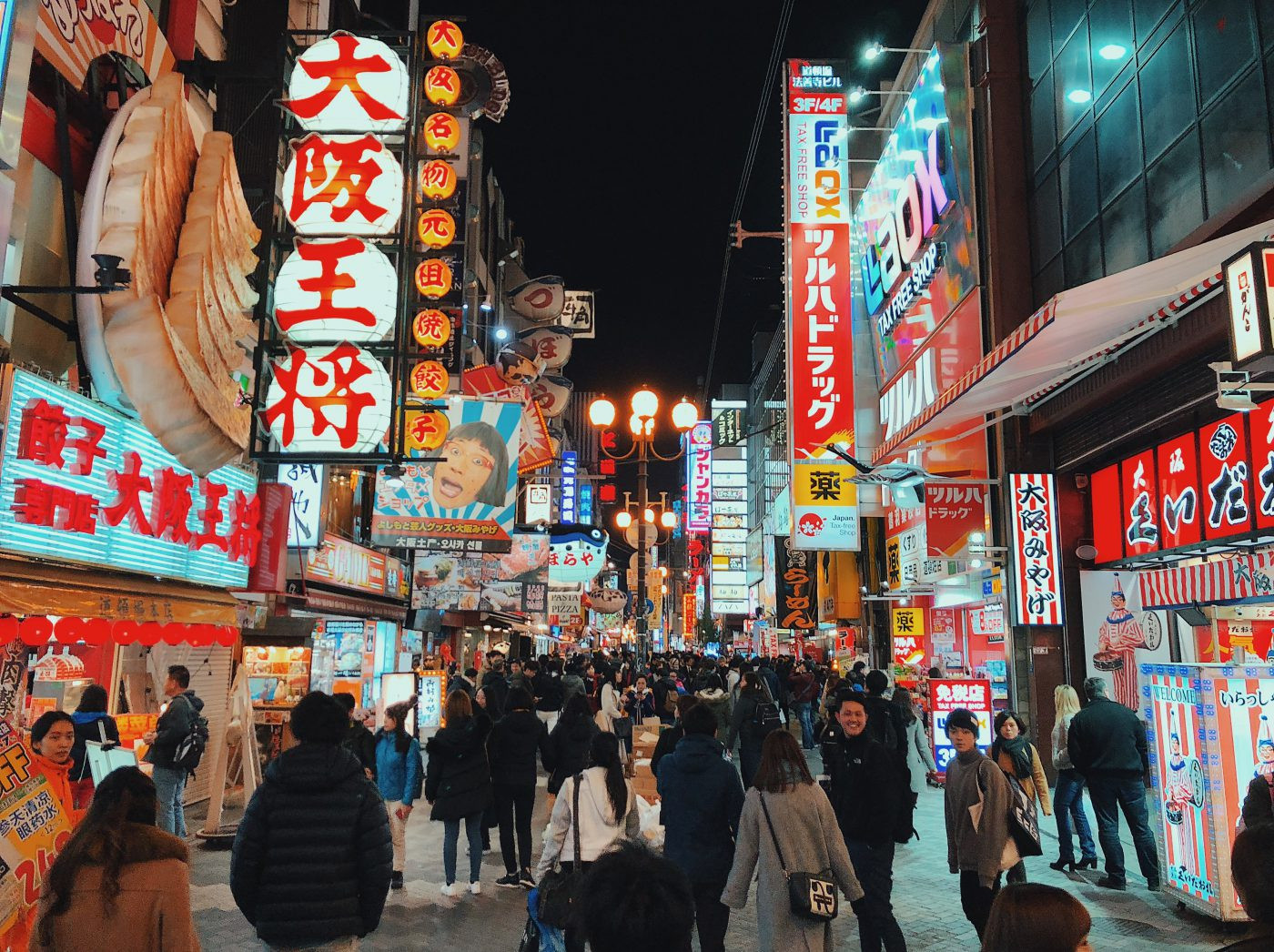 Dotonbori
Dotonbori Dotonbori
Dotonbori
Day 9: Osaka Must-Sees and Culinary Delights
- Morning: Explore Osaka Castle Park and Osaka Castle.
- Afternoon: Discover Den-Den Town (electronics district).
- Evening: Immerse yourself in Dotonbori’s vibrant nightlife and street food, try Takoyaki.
Day 10: Osaka City Views and Modern Attractions
- Morning: Visit Shinsekai district and ascend Tsutenkaku Tower. Explore Namba Yasaka Shrine.
- Afternoon: Choose from Osaka Aquarium Kaiyukan, Cup Noodles Museum, or Suntory Whiskey Distillery (advance booking required).
➡️ Tip: Check our Things to do in Osaka guide for more ideas.
Beyond the Golden Route: Explore More of Japan
For longer stays or return trips, Japan offers endless possibilities beyond the Golden Route.
1. Short Trips from Tokyo: Nature and Culture Near the Capital
Explore destinations within 3 hours of Tokyo, perfect for weekend getaways or day trips. Consider Nikko, Lake Kawaguchi, and other options for nature, temples, and countryside experiences. Discover our recommended short trips from Tokyo.
Left: Mount Fuji view from Arakuyama Sengen Park, Right: Nikko National Park Toshogu Shrine.
2. Short Trips from Osaka: Kansai Region Gems
Osaka is a gateway to the Kansai region, offering easy access to iconic temples in Kyoto, deer in Nara, and other day trip destinations. Explore our favorite short trips from Osaka.
Left: Itsukushima Shrine in Hiroshima, Right: Daruma dolls at Katsuoji Temple in Minoh.
3. Self-Driving Itinerary around Nagano Prefecture: Mountainous Landscapes
For driving enthusiasts, a self-driving tour of Nagano Prefecture offers stunning mountain scenery and charming towns like Karuizawa and Matsumoto. Explore our Nagano Prefecture itinerary.
Scenic landscapes from Nagano Prefecture, including Karuizawa, Kamikochi, and Kusatsu.
4. Hokkaido: Northern Island Adventures
Hokkaido, Japan’s northernmost island, is famous for winter sports, Sapporo Snow Festival, and stunning natural landscapes. Explore our Hokkaido travel guides.
Left: Susukino entertainment district in Sapporo, Right: Goryokaku Fort in Hakodate.
5. Kyushu: Southern Japan’s Hidden Gem
Kyushu, in southern Japan, offers a less crowded experience with diverse attractions, including Fukuoka, Kumamoto, Nagasaki, and Kagoshima. Explore our 7-day Kyushu itinerary.
Left: Chinatown in Nagasaki, Right: View from Daikanbo in Kyushu.
Must-Try Japanese Food: A Culinary Journey
Japanese cuisine is a highlight of any trip to Japan. Beyond sushi and ramen, explore the diverse and delicious world of Japanese food. Discover classic Japanese dishes in our food guide.
Clockwise from top left: Miso Ramen, Hot Soba, and Tempura Soba Set, showcasing Japanese culinary delights.
We hope this comprehensive Japan travel itinerary and guide has been helpful in planning your dream trip. Japan awaits with its unique blend of tradition and modernity, ready to offer you an unforgettable travel experience. Start planning your Japan adventure today and prepare for a journey of a lifetime! 🇯🇵

